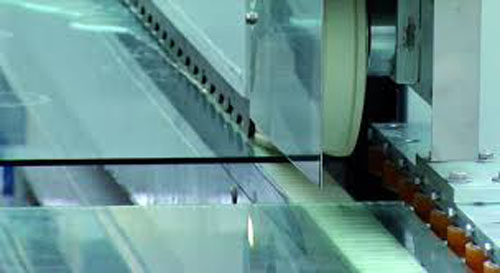
A significant number of glass products needs cold working to reduce surface roughness, improve transparency and intensity before they become valuable. Glass cold working mainly contains two processes - grinding and polishing.

A significant number of glass products needs cold working to reduce surface roughness, improve transparency and intensity before they become valuable. Glass cold working mainly contains two processes - grinding and polishing. What's the major factors that influence glass grinding?
1. Grit Size
Grit size has a great influence on grinding effect and grinding output. Since grinding output increases with grit size, we can use coarse grit size to improve grinding efficiency. Then we can use abrasives with fine grit size to grind, gradually improving grinding effect and reach the surface quality of polishing. Based on different grit size, abrasives can be divided into three categories: granulous (1523009m), powdery(15-150vm), and fine powdery(3.5-28pm).
The grinding output of glass is direct related with grit size. But if grit size is too coarse, the glass surface maybe scratched, which brings further problem for polishing. So choosing proper grit size is of great importance to both grinding output and grinding effect.
2. Abrasives Concentration & Feed Amount
Abrasive grain is suspension processed by water, which can not only cool down the heat produced by friction, facilitate glass surface hydrolyzation, generate silica gel film, but also make abrasive grains evenly distributed on the grinding surface.
Grinding efficiency (glass grinding output) improves with increased concentration of abrasive grains, but if it is improved to certain degree, increased in concentration will make grinding efficiency reduce. So choosing proper abrasives concentration is good for improving grinding efficiency and reduce costs.
With the increase in feed amount per unit time, glass grinding output can be improved. At the same time, with the increase in diameter of abrasives grit size and feed amount, glass output can be improved dramatically. But there is a better choice between the two factors.
3. Abrasives Hardness
The higher the hardness, the higher the grinding efficiency. For example, the Moh's hardness of quartz sand is 7, its grinding efficiency ratio is 1. However, abrasives with high hardness is prone to damage glass surface. so when choosing abrasives hardness, the glass property should be taken into consideration. Hard glass grinding needs high hardness abrasives, such as fused alumina, whose grinding efficiency is high and there is abundant storage. Less hard materials, such as Pumice stone and volcanic ash, are also used as abrasives to grind kinescope glass.
4. Rotation Rate of Abrasive Disc
The rotation rate of abrasive disc affects the grinding output. The faster the rotation rate, the larger the grinding output. However, if an abrasive disc rotates too fast, it may generate huge internal stress to glass, which may be broken during grinding process.
5. Loading Pressure
During grinding process, to improve grinding output and enhance the friction between glass and abrasives, usually we will add loading pressure onto the glass surface. With the increasing of loading pressure, the grinding force of abrasives also increases, the same goes for grinding efficiency. However, if the loading pressure is too high, the friction between abrasives and glass surface, which may result in the decline in grinding efficiency, and even the rotation speed of abrasive disc.
6. Abrasive Disc Materials
Abrasive disc materials, with high hardness, such as non-ferrous metals, plastics, can improve grinding efficiency. We can increase the cut depth of the grinding surface. Less hard plastic discs can make the cut depth shallow, so in the last grinding procedure when plastic disc is used, the polishing time can be shortened. Some people bond the abrasives directly to abrasive discs, which can save feed amount and improve labor intensity. This is a developing trend.